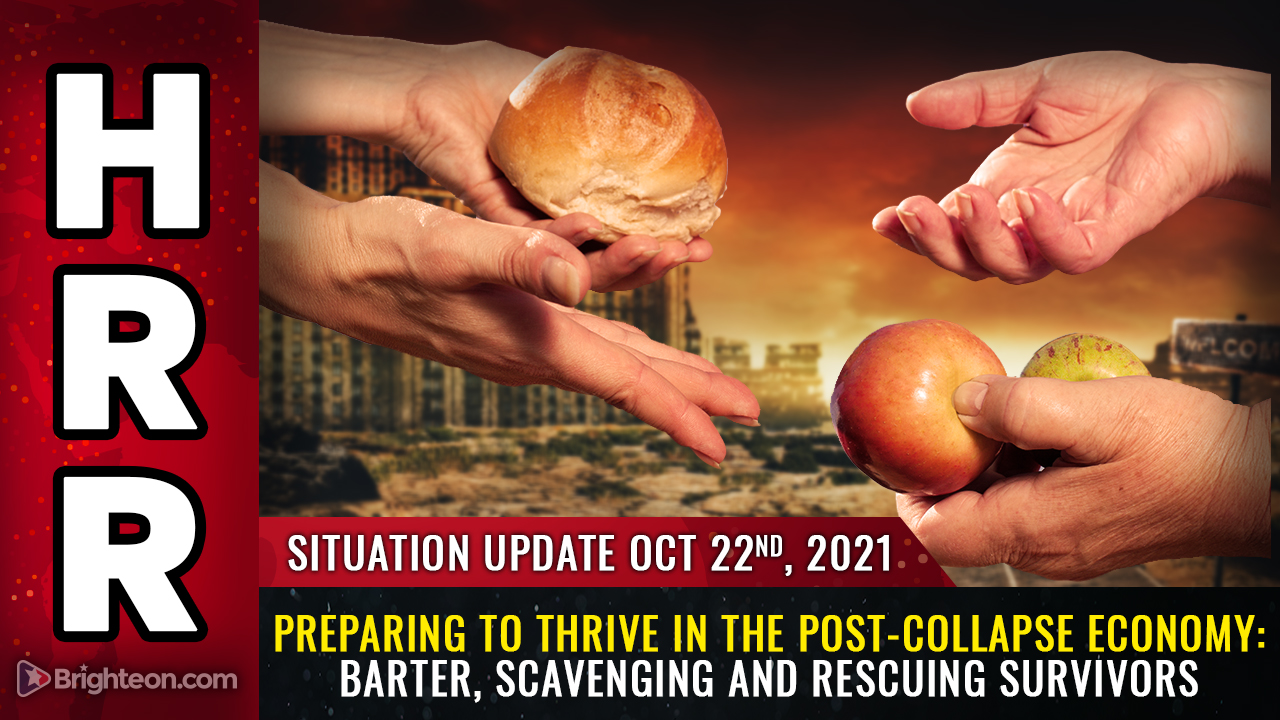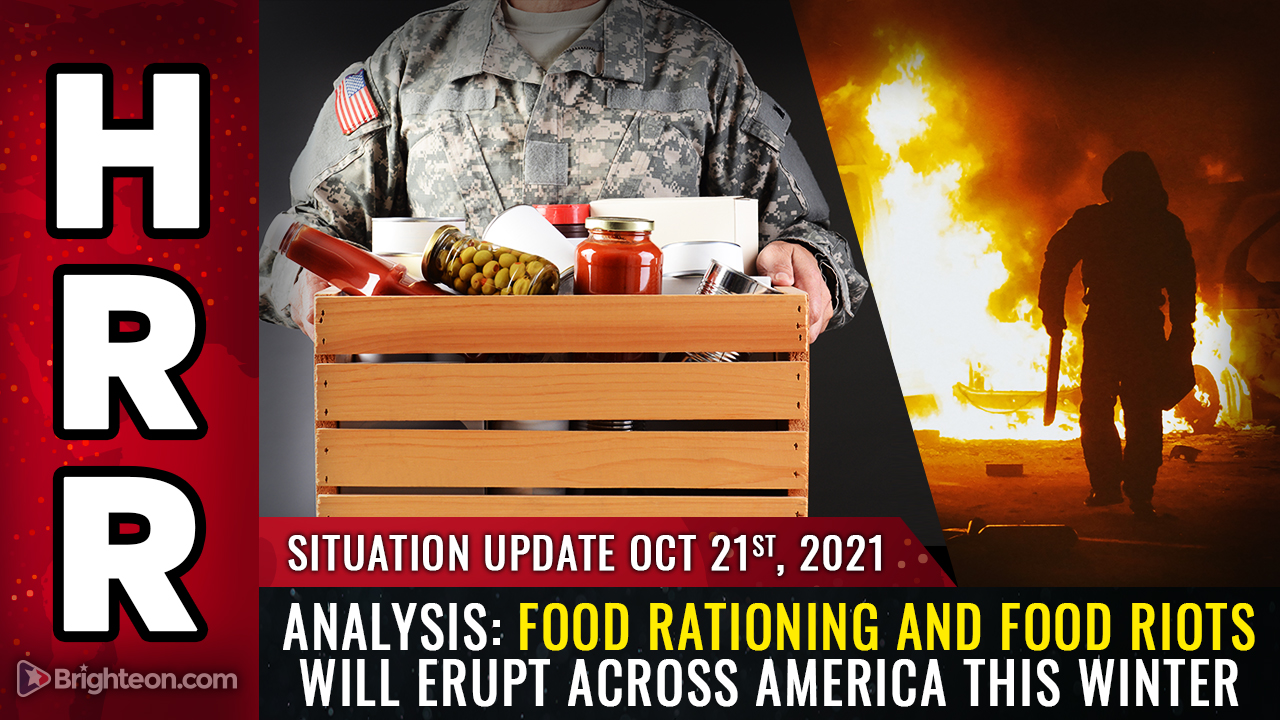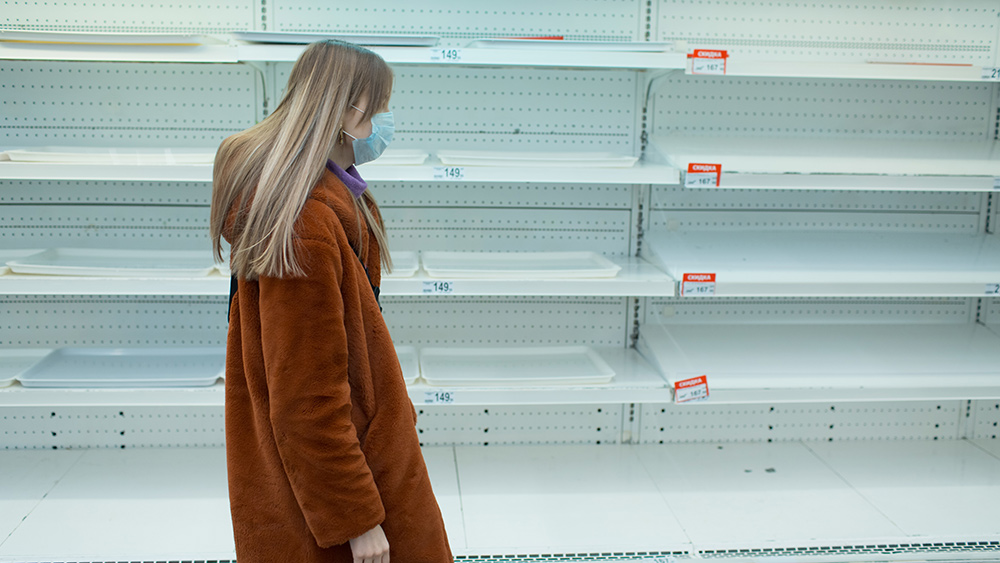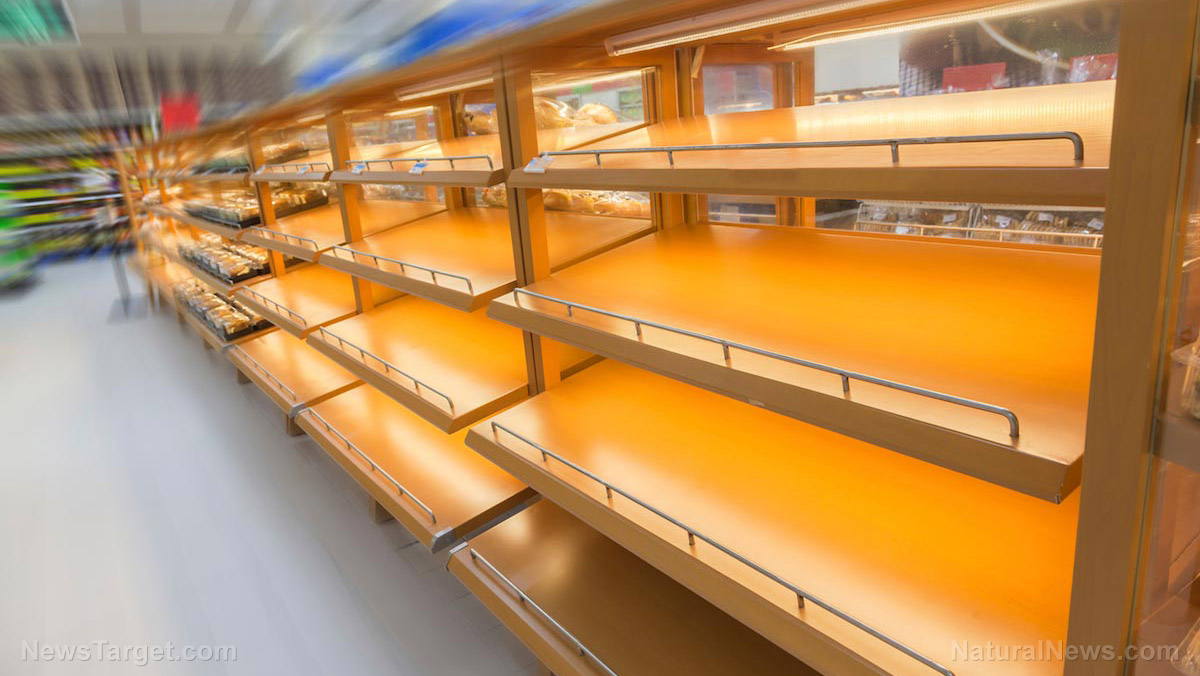Food storage tips: Stock up on foods in gallon buckets
10/22/2021 / By Zoey Sky

Before SHTF, you need to stock up on foods with a long shelf life like beans, pasta or rice. If you have five-gallon buckets, you can store grains and other bulk foods in your survival stockpile. To extend the shelf life of bulk foods, you can also add oxygen absorbers to the gallon buckets. (h/t to PrepSchoolDaily.Blogspot.com)
Stock up on supplies before SHTF
In a long-term survival scenario, storing food in gallon buckets is a good way to stock up on beans and rice, which can be used to make different dishes. These ingredients also pair well with other items you may have in your stockpile, such as canned meat and vegetables.
If you don’t have buckets yet, look for five-gallon buckets that are also food grade. If you can’t find food-grade buckets in stores near your area, line the buckets with Mylar bags instead to keep the food clean.
If you prefer something lighter, ask for four-gallon buckets from the nearest bakery. These buckets will be lighter and easier to carry. As a bonus, four-gallon buckets are often free, or only a couple of bucks.
If you can’t decide between the four- and five-gallon buckets, get whatever’s easier for you to lift and move around your stockpile.
What to store in gallon buckets
While bulk foods go well with gallon buckets, other items suit different storage methods like cans or Mylar bags. These items include more expensive foods that spoil quickly with exposure to air or moisture, or items that you don’t use often.
Keep items like dehydrated and dried foods, freeze-dried foods, milk and powdered eggs in cans or their original packaging.
Foods like beans, flour, pasta, rice, sugar and wheat go well with gallon buckets. Generally, each bucket will hold about 25 pounds of food. This will vary slightly depending on the shape of the food you want to store.
Most buckets are usually 12 inches wide and are HDPE (#2) buckets. You can also use PP (#5), which also have gasketed lids like the HDPE buckets.
When filling buckets, tap the sides to help the contents settle down so that you can fit more in. You need to pack the food compactly and get as much air space out as possible so the oxygen absorbers can work properly.
You can only pack 25 pounds of food in a bucket, even if the bucket isn’t filled completely. However, it’s better to fill the bucket completely before adding the oxygen absorbers so that all the oxygen can be removed once the buckets go into storage.
For optimal long-term storage, line the buckets with Mylar bags. Next, fill the Mylar bags with food, add the appropriate number of oxygen absorbers, then seal.
You can skip the Mylar bags if you regularly rotate your food supplies, you’re using food-grade buckets and if you plan on using up your beans, oats, rice and wheat within five years. (Related: Food supply 101: How to store rice properly.)
Here are some tips on how much food you can store in five-gallon buckets and the oxygen absorber capacity needed. Note that the data below provides estimates for the amount of food that will fit in each bucket.
The actual results may vary depending on how much you are able to tap your buckets and settle the contents.
- Black beans – 37 pounds (lbs.) of food, (3,000 oxygen absorber capacity)
- Brown sugar – 29 lbs. (none)
- Corn – 37 lbs. (1,500)
- Flour – 33 lbs. (1,500)
- Kidney beans – 37 lbs. (3,000)
- Lima beans – 33 lbs. (3,000)
- Macaroni – 21 lbs. (3,000)
- Penne pasta – 15 lbs. (3,000)
- Potato flakes – 12.5 lbs. (4,000)
- Rice – 33 lbs. (1,500)
- Rolled oats – 20 lbs. (4,000)
- Sugar – 35 lbs. (none)
- Wheat – 36 lbs. (1,500)
If you live at an altitude above 4,000 feet, you’ll need about 20 percent less oxygen absorber capacity.
Since you can’t live on beans and rice alone, you should also stock up on other items such as:
- Canned fruit and vegetables
- Canned meat
- Canned soups
- Condiments (e.g., dips, ketchup, mayo, mustard, salsa, soy sauce, spreads and Sriracha sauce)
- Jam
- Jelly
- Peanut butter and other nut butters
- Tomato sauce and paste
- Tuna, sardines and other canned fish
How to store buckets of food in your stockpile
Once you have buckets of food, you have to figure out a way to store them in your stockpile. Since the buckets won’t last forever, you need to keep them away from sunlight.
Putting excessive weight on the buckets will deteriorate plastic buckets. Note that 5 gallon buckets should only be stacked three to four buckets high, with the heaviest buckets on the bottom.
You can stack buckets higher only if those on top contain very light items like medical supplies. At most, the buckets on top of your pile should not exceed two pounds.
While there are other ways to store bulk foods, buckets are one of the most efficient methods to use because they can keep out moths and are rodent-resistant. Buckets are also waterproof.
Note that since plastic is not completely impermeable, buckets should not be stored directly on concrete. Just place some 2×4 boards underneath the buckets so they’re above the concrete.
Get food-grade buckets and stock up on bulk foods like beans and grains before SHTF.
Visit FoodStorage.news for more articles with tips on proper food storage.
Sources include:
Tagged Under: emergency food, food safety, food security, Food storage, food supply, homesteading, off grid, preparedness, prepper, prepping, rice, SHTF, survival, survival food, survival stockpile, sustainable living, tips
RECENT NEWS & ARTICLES
COPYRIGHT © 2017 PREPAREDNESS NEWS





















